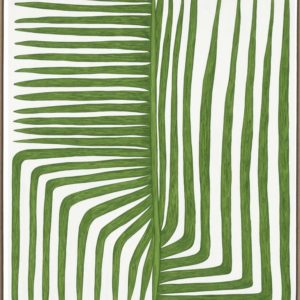Art News
Why Successful People Are Also Art Collectors
“Being good in business is the most fascinating kind of art. Making money is art and working is art and good business is the best art.”
— Andy Warhol
Warhol got it right. There’s an art to making money, and art makes money—literally.
The history of art follows the lineage of the powerful, influential, and famous. Art’s history is full of episodes of philanthropists, patrons, and collectors who have supported young artists, and in doing so, provided them with an invaluable platform to be recognized by the greater public.
Reading from the playbook of art collectors is like reading the list of the world’s top executives. Not convinced? Here are just a few of the most voracious art collectors and benefactors of the past decade:
- Bill Gates of Microsoft enjoys American art;
- Larry Ellison of Oracle has a substantial collection of Japanese art;
- Mark Zuckerberg of Facebook regularly commissions art for his offices and hosts an artists-in-residence program; and
- Paul Allen, a Microsoft co-founder, was repeatedly listed as ARTnews’ top 200 collectors of the year.
So why do some of the world’s most savvy executives and founders collect art? Because artists are innovative, driven, and adventurous—qualities that any entrepreneur aspires to cultivate.
Read on to learn why emerging artists can provide inspiration for success in business, and then start building your own art collection on Saatchi Art.
Creativity
Arguably the most important characteristic that connects effective executives and artists is creativity. Creativity is what enables us to better improve existing business or art practices. Creative minds can manufacture some of the most unthinkable ideas and rewrite the status quo.
Simply put, creativity is the ability of imagination: to see first what others will eventually see. Successful entrepreneurs and artists have this power and are able to bring about major change in their respective fields. Surrounding yourself with artwork acts as a constant reminder to take a groundbreaking approach to solve problems and overcome challenges.
Innovation
Both business leaders and artists are constantly imagining new ideas and opportunities for innovation. Being successful in the business world demands the continuous examination of existing methods and developing ways to make them more efficient and effective, in terms of both time and cost. This ability to see and to innovate is the heart of the artist’s vision—they are by definition “thinking outside the box.” Through color, composition, and subject matter, artists interpret, innovate, and reveal a world hidden yet in plain sight of the artist’s canvas. By having artworks grace your office wall, you will be less likely to rest on your laurels or accept the status quo. After all, artists never do that.
Economic Breakthrough
Successful business leaders persistently work toward utilizing the full potential of resources to generate greater efficiency. In any scenario, increased efficiency adds value by increasing output. The most famous artist-entrepreneur, Andy Warhol, took everyday images—challenging the artistic conventions of his era—made them pop with bright colors, and then mass-produced them through his personal art factory. During the height of his popularity, anti-capitalism permeated the art world. Yet, Warhol utilized the capitalist’s methods of mass production to amass a fortune through his artwork (which oftentimes mocked capitalistic motivations!). His art and vision were both transformative—and an inspirational case study for every executive out there.
Risk-Taking
Leading the business pack often necessitates a certain fearlessness and a potential to take risks. Patience is often required when taking a risk, as it takes time and effort to go from the conceptualization to the implementation of an idea.
An effective business leader or artist relishes the time and effort required to see their risk through to fruition. Jeff Koons’s economic breakthrough—to sell objects to collectors that didn’t actually exist yet—is a financial innovation comparable to that of the JP Morgan bankers who created credit derivatives. Koons developed a whole new art practice by taking this risk. In a similar way, Jackson Pollock stunned the art world with his unique technique that called for the canvas to lie flat on the floor as he dripped paint from above. No one could have guessed that this method would produce some of the most valuable artworks of the 20th century. But Pollock followed his gut and took a leap into the unknown. Consider collecting work that challenges you and your assumptions—it will serve as an everyday reminder of what it takes to be successful.
So, the next time you see a work of art, see it twice for what it is: it’s both something that can alter your world perspective, and a currency that creates its own value through aesthetics and and the marketplace. How many investments are financially viable, have artistic merit, and provide pleasure and inspiration for the buyer? Warhol’s right. “Good business is the best art,” one that you can hang on the wall.
If you want to join the ranks of some of the most financially successful business people today, put art in your office or home. Make use of our Art Advisory service and curators to learn about emerging artists to invest in and how art in our lives and offices is the best investment one can make.
Ready to start building your own collection? Read Saatchi Art’s 8 Essential Steps to Collecting Emerging Art—click the link below to view the free online publication.












